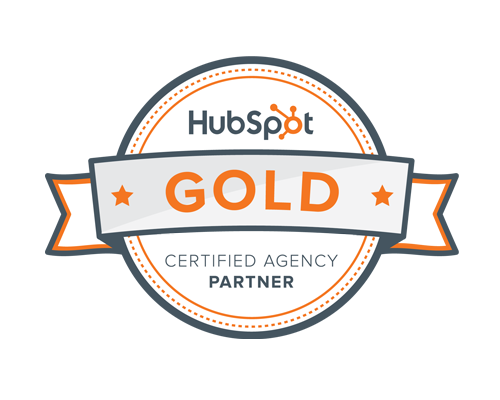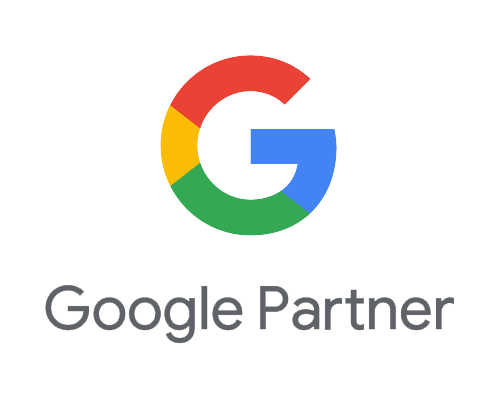
The Strategic Synergy of SEO and Content Marketing: A Blueprint for Amplifying Reach and Impact
Every day, the average internet user performs at least four searches, emphasizing the vast importance of search engines in our daily lives. From simple queries, to in-depth research, we rely on search engines as our first stop when seeking information online.
However, today’s digital world brings an enormous competition for attention. Developing valuable content is essential, but a strategic approach to search engine optimization (SEO), is even more vital to ensuring your content doesn’t get lost in the noise.
In this blog, we’ll explore how a solid SEO strategy, aligned with content marketing efforts, boosts visibility, engages your target audience, and drives tangible results.
Understanding the SEO & Content Marketing Relationship
To truly succeed in our modern digital landscape, it’s essential to recognize that SEO strategy and content marketing are not standalone efforts—they are interdependent strategies. Content marketing delivers the valuable, engaging material that search engines prioritize and audiences look for. A curated SEO strategy provides an organized framework to boost that same content’s visibility on search engine results pages (SERPs).
SEO as the Roadmap
At its center, SEO encompasses ensuring content reaches the correct audience. Through curated keyword selection, on-page optimization, and adherence to search engine guidelines, an SEO strategy builds a curated plan that can navigate the competitive terrain of SERPs, and assure content ends up in front of your potential buyers. By understanding what users search for, an SEO strategy enables businesses to anticipate needs, align content with what’s trending, and elevate ranking results.
Content Marketing as the Fuel
Content marketing provides the substance and the voice to engage your audience online. Informative, compelling, and relevant pieces are what drive user’s interest and long-term engagement with your brand. Content marketing strategy goes further than just surface-level information - it offers meaningful insights and solutions that resonate with readers. Together, SEO strategy and content marketing amplify each other’s potential, forming a powerful mechanism to reach audiences, capture attention, and convert users.
Proven SEO Strategies for Content Marketing
Creating an effective SEO-content marketing strategy requires a multilayered approach, where each element works in unison to strengthen overall performance. Here are the critical elements to focus on:
Keyword Research: The Foundation of SEO-Driven Content
Keyword research is the foundation of a successful SEO strategy. Content may fail to reach the audience it was made for without thoughtful keyword identification. Impactful keyword research enables content creators to understand the specific language and phrases users are entering into search engines. Here’s how to approach it:
- Identify User Intent: A tactical approach to keyword research starts with knowing user intent. Consider whether potential buyers are looking for information, exploring options, or making a purchase. Recognizing intent helps refine keyword choices and secure that content aligns with what users are genuinely seeking.
- Leverage Tools and Techniques: Tools like Moz, Google Keyword Planner, Ahrefs, and SEMrush are essential for gathering data on keyword volume, difficulty, and trends. Long-tail keywords, for instance, commonly reflect specific user intent and can be easier to rank for, especially in competitive niches.
- Target the Right Keywords: Aim to utilize keywords that have a balance of search volume and relevance to the content you’re creating. By selecting keywords that align with user intent and offer reasonable chances for ranking, you can appeal to a more qualified audience, improving the likelihood of conversions.
On-Page Optimization: Enhancing Content Accessibility
On-page optimization focuses on refining content components to increase the possibility of ranking. It constitutes strategically optimizing title tags, meta descriptions, headers, and image alt text to ensure search engines can interpret the content accurately. Here are some core practices:
- Title Tags and Meta Descriptions: These elements act as the “first impression” of your content on SERPs. A well-crafted title tag should be direct, descriptive, and include a primary keyword. Meta descriptions offer a snippet of what users can expect before diving into your content. Studies show that 40.61% of pages have meta descriptions that truncate, meaning they exceed the character limit and end up getting cut off. To avoid this, make sure descriptions remain within 155–160 characters.
- Headers and Subheadings: Utilizing headers (H1, H2, H3) to break up content makes it more readable and digestable, while signaling to search engines the structure of the page. Headers should include relevant keywords but shouldn’t “keyword stuff,” which can lead to penalties.
- Image Optimization: Images enhance user engagement but also must be optimized for SEO. Descriptive alt text improves accessibility and provides search engines with context regarding image content. Additionally, compressing images may reduce loading times, improving user experience and search ranking potential.
Content Structure and Formatting: Prioritizing User Experience
The structure and format of content play a critical role in keeping readers engaged. Well-organized content elevates the user experience, which search engines use as a factor in ranking. Here are some best practices:
- Readable, Well-Structured Content: Readers on the internet today prefer content that’s easy to scan. The key is to use short paragraphs, bullet points, and lists to enhance readability. Tying this in with engaging introductions and clear, concise conclusions will improve user retention, and signal to search engines that content is high-quality and valuable.
- Internal Linking: Internal links guide users to other relevant pages on your website, increasing the time they spend with your content and brand. This interconnectivity also improves search engines’ ability to gather the website’s structure, enabling more comprehensive indexing of your content.
- Mobile-Friendly Design: With the ability for mobile browsing almost anywhere, versatile design is essential. Ensure that content displays correctly on all device types. Google prioritizes mobile-friendly sites, so a responsive design can have a big impact on SEO rankings.
Content Amplification and Distribution: Extending Reach Beyond Organic Search
Content promotion is a vital part of content marketing strategy that extends beyond search engines alone. Relying solely on organic traffic is limiting, so a diversified promotion strategy is essential for success. Here are some methods:
- Social Media: Circulating content on social media platforms like Facebook, LinkedIn, and X drives additional traffic, especially when targeting platforms your audiences frequently visit. Making sure to engage directly with users on social media also builds brand loyalty, excitement, and site visibility.
- Email Marketing: It may be surprising, but email remains one of the most effective marketing channels today. By segmenting your email lists and curating content to specific audience lists, you can boost open rates along with click rates. Share blog posts, company events, or educational or content to keep your audience connected, informed, and engaged.
- Collaborations and Guest Blogging: Partnering with influencers or contributing guest posts on reputable sites improves credibility and introduces your brand to new audiences. Incorporating backlinks from high-quality sites that elevate your contents message also enhance SEO authority.
- Repurposing Content: Repurposing your content in forms like videos, infographics, and podcasts can aid in reaching fresh eyes of potential buyers who prefer different content mediums. Additionally, repurposed content can offer SEO benefits by targeting varied keywords and expanding your website’s footprint.
Final Thoughts
In today’s world, anyone can produce content and post it on the internet. But, what will make your message stand out? A well-executed SEO strategy and content marketing plan is what makes all the difference when looking to truly amplify your reach and impact as a business. Understanding the relationship between SEO and content marketing, inherently gives companies an edge when creating a roadmap that guides valuable content into the right hands. By investing in a robust SEO-content approach, businesses can elevate their digital presence, attract more qualified leads, and foster lasting relationships with their audience and potential buyers.
Ready to see how a strategic SEO-content marketing approach can benefit your business? Reach out today!




